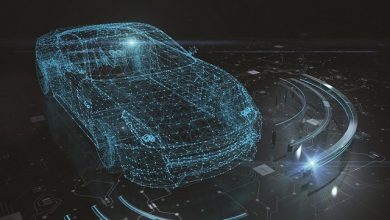Impact of autonomous driving technology on component design

In the past decade there has been a significant evolution of technologies in personal computing, wireless communication, and automotive. The emerging convergence of these technologies is leading to new possibilities like advanced features for automation, safety, and convenience in modern vehicles. The attractive opportunities in the areas of sustainability and reducing road accidents are driving future investments towards the mission of realizing autonomous vehicles. While the journey towards this mission has already begun, there are still several legal and technological barriers to be addressed before the benefits are widely dispersed across the globe. Additionally, the pandemic in 2020 has impacted the timelines towards fully autonomous vehicles slightly further. As per a recent Global Data vehicle market forecast, only around 2% of all light vehicles will be fully autonomous by 2034. However, it is not too far to imagine that by 2050 a significant percentage of vehicles will be fully autonomous.
While the design of the autonomous features is important, the impact on existing components must be investigated because of the potential for a wide-spread adoption of autonomous vehicles. For example, the impact on the two categories below are interesting to consider:
- Human-to-vehicle interface: With autonomous vehicles there will be an increase in sensors and the ability for the vehicle to take real-time decisions. To build trust, the vehicle would need to interact with the occupant in multi-modal manner. To reduce the cognitive load on the occupant, who must respond rationally, the user interface has to be redesigned to make it more intuitive and intelligent (situation aware) leveraging technologies in speech processing, touch and gesture recognition, augmented reality, artificial intelligence, and graphics.
- Vehicle-to-road interface: Road transportation networks are significantly well developed across the globe and are here to stay even with the advent of autonomous vehicles. However, the autonomous vehicle manufacturers have to reconsider the design of tires. There are emergent requirement changes on range, vehicle weight, torque demand and sustainability. Additionally, there are new possibilities which can be considered to increase the safety and reliability of vehicles.
Let us look at the current megatrends which are accelerating the technology towards achievement of fully autonomous vehicles, and their impact on the two components above as an example.
1. Increase of software in vehicles
With the advancement of sensor technology, additional software is implemented to process more information about the state of the vehicle and the environment. As a result, software is becoming increasingly pervasive in automotive system design. The latest trend reports indicate that the software and E/E content in the car is expected to grow at a much larger rate (~7%) compared to the automotive market (~3%) until 2030. (Reference: McKinsey Report – Automotive software and electronics 2030).
Traditional vehicle architectures are predominantly distributed, with information exchanged between sensors and various ECUs and gateways via multiple network technologies like CAN, LIN, Ethernet, etc. With new sophisticated ADAS features like lane departure warning, automatic emergency braking, etc., interaction at system level becomes complex, increasing the possibility of introducing errors in design, performance, or user experience. To increase reliability, such risks must be addressed by multiple approaches.
Firstly, with the increasing availability of higher computing power in a single electronic chip, it is possible to rationalize the ECU network architecture itself. Multiple ECU software can be consolidated into a single hardware called domain controllers. Besides system design and performance, this leads to advantages like the reduction in cost, weight, and power consumption. Further consolidation is possible with zonal and vehicle level architectures. As a result of all these shifts, the complexity is now moved from hardware to software domain. For example, until recently an HMI was distributed with separate ECUs for the head unit, instrument cluster, and heads-up display. In latest platform architectures all these ECUs are replaced by a single “cockpit” domain controller. On such high-performance computing platforms, advanced design tools are required to allow OEMs to focus on differentiating software IPs. One example of such a tool is EB xelor which includes standard & generalized basic software platforms like AUTOSAR (Classic & Adaptive), a configuration tool like EB tresos along with a hypervisor, and a container-based Linux distribution.
Secondly, with the arrival of 5G networks it is possible to move some of the computing to the cloud instead of onboard. This gives rise to new possibilities. One example are the tires equipped with modern sensors like pressure, temperature, and depth monitoring. Such information transmitted to the cloud can be utilized to increase fuel efficiency and predictive maintenance for large-fleet operations. ContiConnect is one example of this application.
Thirdly, with the increased complexity of advanced driver assistance features, it is critical to re-design user interfaces to reduce the cognitive load of the drivers. HMIs are now utilizing advanced speech processing, with a lot of computation on the cloud. By collating data from the environment, internet, and user’s preferences together on the cloud platform, a context-aware and situation-aware multi-modal interaction is possible. Further, to enhance the experience of the vehicle occupant, the critical information can be directly visualized on the driver’s line of sight with augmented reality systems such as head-up displays. To realize the design of such complex interactions of HMIs with voice, touch, and gesture, a suitable HMI software design tool is required. EB GUIDE and EB GUIDE arware are examples of such a tool.
Finally, for complex ADAS/AD software features to be integrated successfully along with other vehicle components, it is critical to undertake a comprehensive validation and verification. This includes capturing in-vehicle sensor data, processing this test data in the cloud, and conducting tests to ultimately make them reliable for series production. The EB Assist product line covers both the measurement technology and the software tooling for globally distributed development teams to efficiently conduct these tasks.
2. Changes in vehicle platform – electric vehicles
The battery technology has reached an inflection point where the dropping price of lithium-ion batteries makes it an attractive opportunity to be utilized in vehicles. Current global trends indicate that by 2025 more than 30% of global vehicle sales will be electric (reference: Frost &Sullivan Global Electric Vehicle Market). With Tesla leading the race, OEMs like Volkswagen and General Motors, among others, are changing their strategy to include more electric vehicles in their product portfolio. Besides the direct advantage of reducing the carbon footprint, the BEVs (Battery Electric Vehicles) reduce the number of components in the vehicle significantly. Hence, it is possible to reduce the overall cost of vehicles while achieving the same features as traditional gasoline vehicles.
There are several new features that an electric vehicle offers. For example, the braking torque can be utilized to recharge the battery by regenerative braking. This reduces the wear on the brake pads which will now last longer. Higher roll stability is obtained by the weight of the batteries which supports in tight maneuvers. The adoption of BEVs simplifies the management and control of vehicle dynamics by directly driving the torque on individual wheels, essentially through electric motors. This allows for interesting applications like 1-pedal driving especially on off-road terrain. Additionally, designers can focus on higher-level functions like path planning and localization, to design autonomous vehicles for urban transportation.
However, the design of existing components is impacted. The tires must be re-designed to reduce the rolling resistance. Additionally, BEVs generate relatively higher instantaneous torque, which needs to be handled by tires. The NVH generated by the tires has to be managed, since the overall noise of the BEV is significantly reduced. EcoContact 6 is an example of a tire for electric vehicles from Continental.
From a user interface perspective, reporting the battery state of charge, alerting, and navigating to the next charging station are some of the aspects to be considered.
While electric vehicle technology is maturing and becoming mainstream fast, the current challenges in terms of charging infrastructure and battery life cycle management must however be addressed to increase adoption.
3. Emergence of new business models: Mobility as a Service (MaaS)
The shift towards BEVs disrupts the existing relationships between OEMs and suppliers. Additionally, the emergence of ride sharing services like Uber and Lyft has re-segmented the automotive marketplace, where end users are interested in the mobility service instead of ownership. MaaS increases the overall utilization of the vehicle. OEMs must find new business models to continue their growth with focus on B2B instead of B2C segments. For example, OEMs could directly offer vehicle as a service. This allows OEMs to manage the entire life cycle of the vehicle to meet the sustainability goals, optimizing revenues and product portfolios.
With level 4 and 5, autonomous vehicles becoming a reality, MaaS would increasingly become a dominant trend. Already autonomous delivery services like Nuro are coming up.
Other models are also being adopted. For example, GM recently launched BrightDrop offering fleet management solutions to large logistic businesses like FedEx.
As MaaS gets widely adopted, it will impact the vehicle tire design. Manufacturers will now have to provide tires which have a higher range performance. Additionally, life cycle management of tires and offering them as a service is becoming a viable business. It is possible to retread the worn-out tires and re-supply them to the market with original performance.
MaaS will also impact user interfaces, with in-vehicle entertainment, connectivity, and augmented reality becoming prominent. Multi-modal user interfaces, with the ability to customize the experience inside the vehicle based on occupants’ preferences and mood, are going to be a differentiator between services.
Conclusion
While there are significant opportunities in the journey towards autonomous driving, there are going to be changes in the design of traditional components and business models. Advanced design tools and new mechanisms of collaboration between designers of various components to analyze the system behavior will be critical to harmonize the changes and provide reliable and sustainable products to end customers.
Author:

Saurabh Kumar is a Project Manager at Elektrobit India Pvt Ltd. He has more than 16 years of experience across the globe, in design and management of projects in the automotive sector. He is a certified IATF Auditor, and an expert in the application of agile techniques. His interest lies in the application of emergent technologies in the automotive industry.


